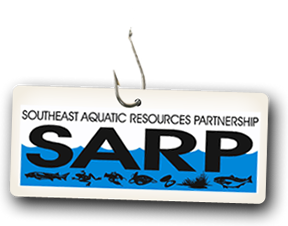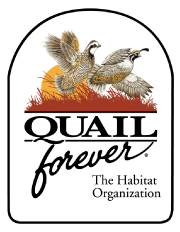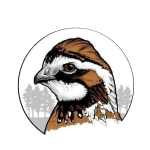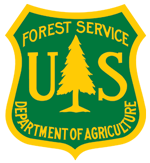News
Senators Reintroduce Landmark Wildlife Conservation Bill
The bipartisan legislation would invest billions in state, Tribal conservation efforts
Engaging private landowners at the National Association of Conservation Districts annual meeting
The National Association of Conservation Districts (NACD) held their 77th annual meeting last month in New Orleans.
Welcome to the Southeast CASC March 2023 Newsletter
SE CASC News; Resources; Publications; Tribal News; Events; .Opportunities
Are Hellbenders Found Downstream of the Ohio Train Derailment Really a Sign That the Water is Safe?
Ohio authorities have called the recent capture and release of two hellbenders downstream from the site of a train derailment and toxic chemical spill a 'positive discovery,' because hellbenders are an indicator of a healthy aquatic ecosystem, but the reality is more complicated.
Gopher tortoises in Southern states deserve federal protections, groups say
ST. PETERSBURG, Fla. — Gopher tortoises imperiled by loss of habitat largely caused by human development should be placed on the endangered species list in four southern states, environmental groups said Wednesday as they prepared to sue the federal government over the issue.
Landscape Partnership Newsletter-Announcing Bobscapes: A Mobile App To Track Northern Bobwhite On Our Landscapes
Working Lands for Wildlife is happy to announce the launch of Bobscapes, a Mobile App to track Northern Bobwhite. Bobscapes is the newest online tool to join the suite of decision-support tools hosted on the Landscape Partnership Portal.
USDA Invests More than $48.6 Million to Manage Risks, Combat Climate Change
WASHINGTON, Feb. 21, 2023 – The U.S. Department of Agriculture (USDA) will invest more than $48.6 million this year through the Joint Chiefs’ Landscape Restoration Partnership for projects that mitigate wildfire risk, improve water quality, restore forest ecosystems, and ultimately contribute to USDA’s efforts to combat climate change. This year, the USDA Forest Service and Natural Resources Conservation Service (NRCS) will invest in projects, including 14 new projects, bringing together agricultural producers, forest landowners, and National Forest System lands to improve forest health using available Farm Bill conservation programs and other authorities.
News from SECAS February 2023 Newsletter
Recap of Caribbean CoP meeting, new Blueprint Explorer features, spring web forum schedule, and more.
George Benz Aquatic Ecology Fellowship at Tennessee Aquarium
The Tennessee Aquarium is now taking applications for the George Benz Aquatic Ecology Fellowship.
Funding Announcement: 2023 Shade Your Stream Grant Program
Streambank Restoration Funding | AL, GA, KY, MS, NC, TN & VA.
NY NRCS Area Biologist Reflects on Nearly Two Decades of Conservation Success
Elizabeth Marks, NRCS Area Biologist, discusses the Bog Turtle Working Lands for Wildlife partnership in New York
Oak Regeneration
Competing species in the white oak range are shading out young white oaks thus preventing regeneration, resulting in a non-sustainable demographic dominated by older trees. Dr. Jeff Larkin is a professor of Wildlife Ecology and Conservation at IUP, as well as the Forest Bird Habitat Coordinator for the American Bird Conservancy. He says: it's just as important for landowners and forest managers to 'look down' as it is to 'look up' when it comes to oak forest management and stewardship. These photos, taken by Dr. Larkin, demonstrate white oak regeneration within the forest understory.
New analysis highlights conservation challenges and opportunities on Western public lands
Recently published science applies remote-sensing tools to BLM-managed rangelands and provides an unprecedented record of how the vegetation across this enormous area has changed over the past 30 years.
AFS Newsletter February 2023
AFS Newsletter: Latin America Congress Abstract Deadline Extended, Award Nominations Open, Rockfish Citizen Science.
LANL study finds wildfire-scorched areas prone to reburning
Scientists studied landscapes in 11 states that were burned by multiple fires within a 20-year period.
Fire Lines Volume 12 Issue 5
November-December 2022 Vol. 12 (5): Research Brief; SFE Updates; What's New in Fire Science?; New Technology and Tools; Other News; Upcoming Events; New Fire Science Publications for the South; Funding Opportunities.
Conservation Corridor February 2023 Newsletter
Connecting science to conservation.
National Fish and Wildlife Foundation Central Appalachia Habitat Stewardship Program Announces Funding for Projects to Support Hellbender Conservation
The National Fish and Wildlife Foundation has has announced grant awards for the 2022 cycle of its Central Appalachia Habitat Stewardship Program and several of the awards will benefit Eastern hellbenders.
2022 Was a Busy Year for the Working Lands for Wildlife Hellbender Program
2022 was a busy year for the Working Lands for Wildlife hellbender program.
AFS Newsletter January 2023
Snake River Dam Statement, Upcoming Conference Deadlines, Striped Bass Origins.


























